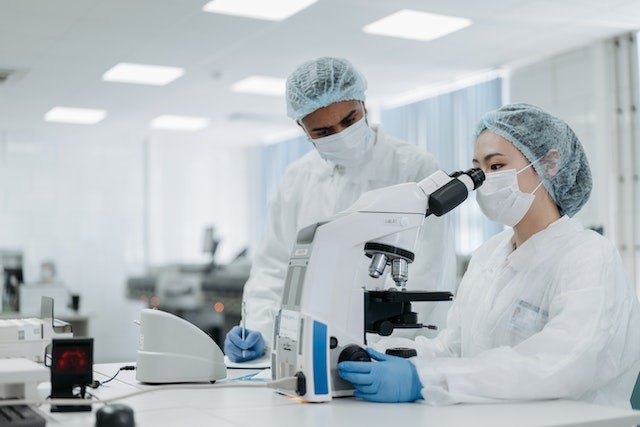Previous research typically used nanozymes as antibacterial materials. Nonetheless, nanozymes depend on H2O2, O2, superoxide, and hydroxyl radicals to generate reactive oxygen species, which hinders their utilization in anoxic environments.
Sulfate-reducing bacteria, or SRB, a Phys.org report said, an anaerobic bacterium, has long been regarded as the main culprit in leading to corrosion failure of metal materials.
Researchers find novel 'nano killers' for sterilization and antifouling https://t.co/r0ibosoJr6 https://t.co/OP7uemvwyR
— PhysOrg Physics News (@physorg_physics) September 5, 2022
A team of researchers led by the Institute of Oceanology of the Chinese Academy of Sciences Professor Zhang Dun has recently discovered that a MoS2 nanosheet-based vacancy material activated by permonosulfate allows efficient anaerobic microorganisms disinfection.

Researchers discovered nanosheet-based vacancy material, also called nano killers, as the potential for detecting and killing cancers.
Generating Oxzidative Active Species
In their research published in the Journal of Hazardous Materials, the authors built a quick and efficient anaerobic bacterial sterilization system using MoS2 nanosheets through the synergistic impact between physical impairment and chemical oxidation.
For physical damage, the negative sulfur of MoS2 can bond easily with hydrophilic heads of lipids, and the edges of MoS2 can function as a "knife" to cut through the cell membrane.
Based on density functional computations, the study investigators discovered that MoS2 nanosheets could catalyze permonosulfate and H2O to generate oxidative active species or OAS.
Such OAS could be envisioned as "nano killers," which constantly oxidize the lipids surrounding MoS2, re-release the so-called sharp knife's surface, and lead to cell death.
Free Radicals
"With the collaboration of physical injury and chemical elimination, MoS2 features highly exposed active sites and tunable S vacancies, constructing a platform for boosting the generation of 'nano killers.'
These free radicals' increased production, coupled with their close contact with microbes, allowed for quick and stable sterilization in different environments, Wang Jin, the study's first author, explained.
Professor Zhang added that this work would welcome new horizons on anaerobic bactericidal mechanisms and disinfection approaches.
Moreover, the process of physical extraction, in collaboration with chemical oxidation, not just accurately positions the cell membrane but allows as well, for continuous sterilization.
According to the corresponding author of the study, Professor Wang Yi, this work is digging into the mechanism of anaerobic microbial sterilization, shedding light on biological analysis, antimicrobial, cancer treatment, and anti-microbiologically influenced corrosion.
Nano Killers Against Certain Illnesses
This is not the first time nano killers have been reported. In 2004, WIRED reported that a company known as Kereos was developing a pair of nanotechnologies to determine tumors that measured just one nanometer in diameter, then kill them with a small yet accurate amount of chemotherapy drug.
The said technologies were developed not just to find cancers in their earliest stages before damaging or spreading but also to deliver a small amount of a drug targeted directly at tumors, which could cause minimal or no side effects.
Furthermore, the technologies were in their early developmental stage at the time of this report. The company officials announced that the diagnostic mechanism was set to enter human trials the following year, and the treatment tool should follow six months behind.
What's certainly nice about these two nano killers is that they both track the same biomarkers, according to Al Beardsley, Kereos President and CEO.
He also said they were using it as a signpost to say there's a tumor and then as a treatment target.
Related information about sulfate-reducing bacteria is shown on Audiopedia's YouTube video below:
RELATED ARTICLE: E-Nose Developed to Detect Nanoplastics in the Air
Check out more news and information on Nanoparticles in Science Times.














